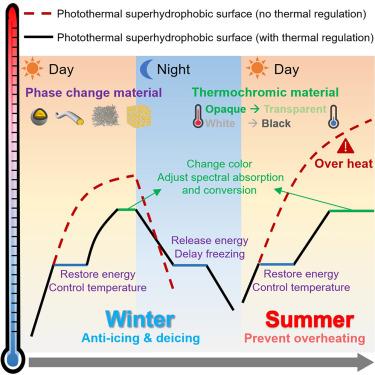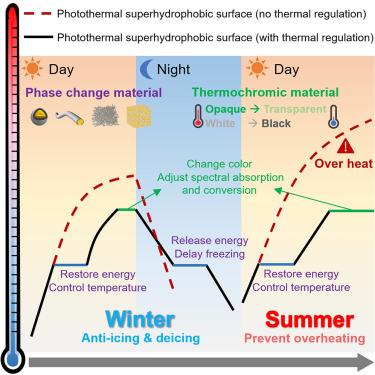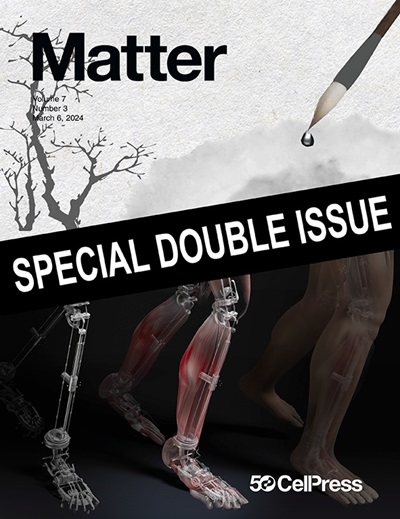光热超疏水防冰表面需要动态热调节
IF 17.5
1区 材料科学
Q1 MATERIALS SCIENCE, MULTIDISCIPLINARY
引用次数: 0
摘要
几千年来,冰的积累一直是人们关注的问题,给人类安全带来了风险,并造成了重大的经济损失。最近,光热超疏水表面已经成为一种很有前途的防冰技术,即使在极端寒冷的条件下也能防止冰的形成。然而,这些表面面临着一个关键的缺点:在高温和强烈的太阳光照条件下过热,这可能对表面材料和内部组件造成不可逆转的损害。本文强调了光热超疏水表面热调控的必要性,并提出了一种结合相变材料和热致变色材料的策略。相变材料可以通过储存/释放潜热来实现温度控制,而热致变色材料可以根据温度变化来调节光热转换。我们进一步提出了两种可行的设计方案,将两种材料整合到光热表面,以启发研究人员。这一视角将凸显未来表面防冰技术的发展方向。本文章由计算机程序翻译,如有差异,请以英文原文为准。


Photothermal superhydrophobic anti-icing surfaces necessitate dynamic thermal regulation
The issue of ice accumulation has been a concern for thousands of years, posing risks to human safety and resulting in significant economic losses. Recently, photothermal superhydrophobic surfaces have emerged as a promising anti-icing technology, capable of preventing ice formation even in extremely cold conditions. However, these surfaces face a critical drawback: overheating under high-temperature and intense solar illumination conditions, which can cause irreversible damage to both the surface material and the internal components. Here, we emphasize the necessity of thermal regulation for photothermal superhydrophobic surfaces and propose a strategy that incorporates phase change materials and thermochromic materials. Phase change materials can achieve temperature control by storing/releasing latent heat, while thermochromic materials can adjust photothermal conversion according to temperature changes. We further present two feasible design schemes that integrate the two materials into photothermal surfaces to enlighten researchers. This perspective will highlight the development direction of future surface anti-icing technology.
求助全文
通过发布文献求助,成功后即可免费获取论文全文。
去求助
来源期刊

Matter
MATERIALS SCIENCE, MULTIDISCIPLINARY-
CiteScore
26.30
自引率
2.60%
发文量
367
期刊介绍:
Matter, a monthly journal affiliated with Cell, spans the broad field of materials science from nano to macro levels,covering fundamentals to applications. Embracing groundbreaking technologies,it includes full-length research articles,reviews, perspectives,previews, opinions, personnel stories, and general editorial content.
Matter aims to be the primary resource for researchers in academia and industry, inspiring the next generation of materials scientists.
 求助内容:
求助内容: 应助结果提醒方式:
应助结果提醒方式:


